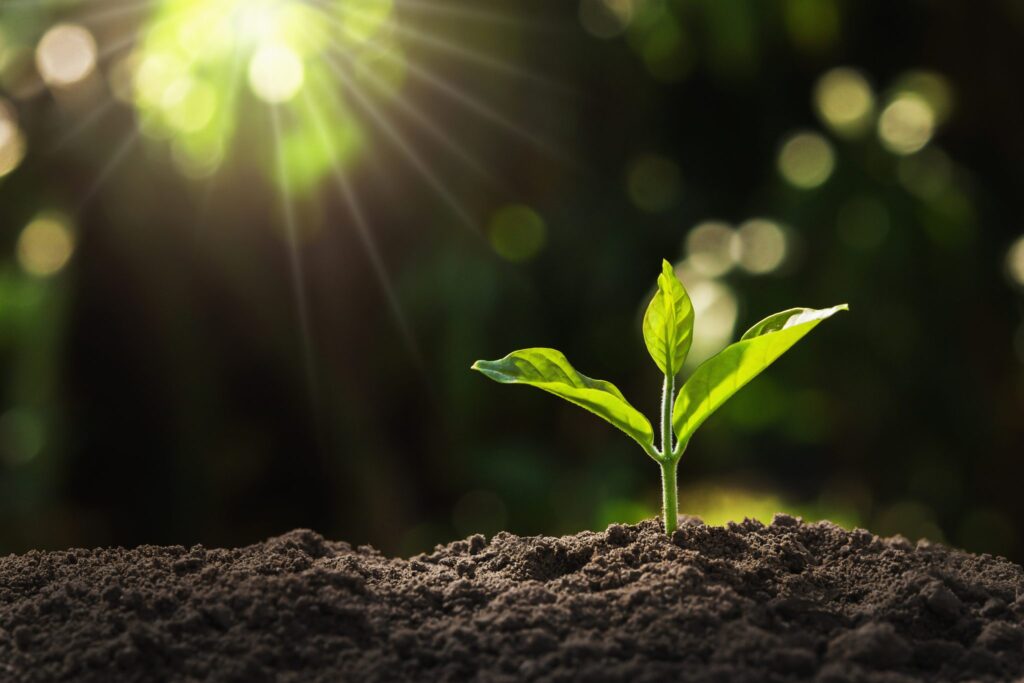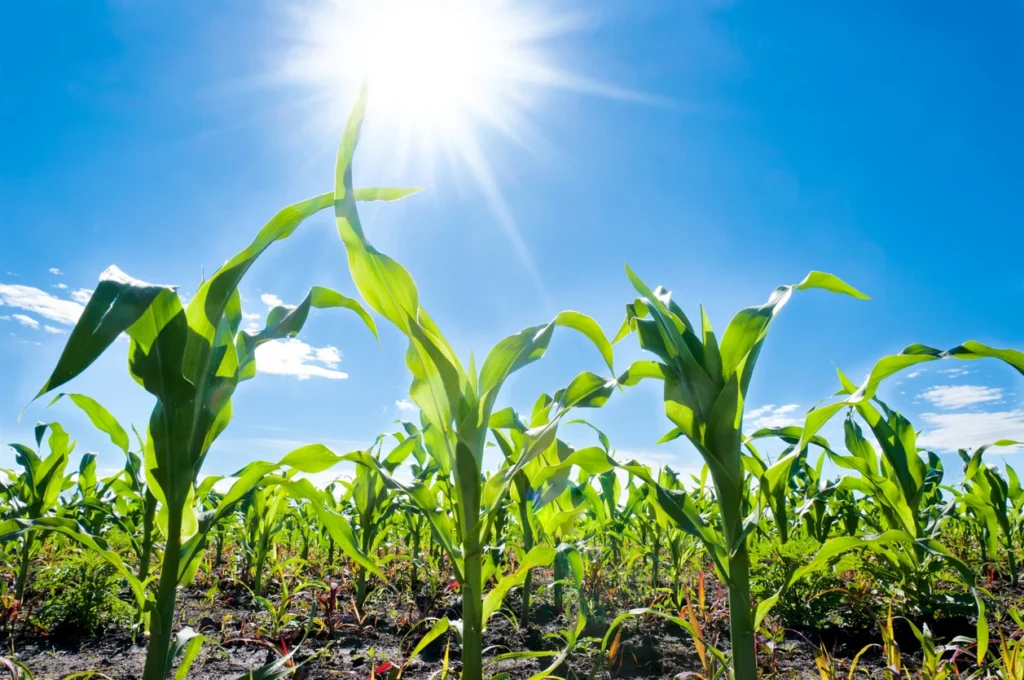The plants are part and parcel of nature’s powerhouses, able to change solar energy into actual energy through the photosynthesis process. The wonderful set of biochemical reactions represents the backbone of life on Earth, endowing and supporting plants with life energy while energizing nearly every living creature on this planet. An understanding of how the plants manage with the sun and apply it to fabricate released energy explains the underlying delicate balances of ecosystems and biotic forms on the planet.
Photosynthesis: The Basics
Photosynthesis is the process by which green plants, algae, and a few bacteria capture light energy, usually from the sun, and change that energy into chemical energy stored in glucose. This occurs in the chloroplasts, specialized organelles in plant cells and it contains the pigment for capturing the light energy.
The Photosynthesis Equation
The net chemical equation that represents photosynthesis can be simply put as:
[ 6CO_2 + 6H_2O + light\ energy \rightarrow C_6H_{12}O_6 + 6O_2 ]
This equation states that during light, carbon dioxide reacts with water to produce glucose and oxygen.
The Two Processes of Photosynthesis
Photosynthesis primarily occurs in two stages. These are: the light-based reaction and the Calvin cycle (also known as light-independent reactions or dark reactions).
1. The Reaction That Requires Light
The light–dependent reactions occur within the thylakoid membranes of the chloroplasts and must have light to proceed. The entire process can be simplified to the following basic steps:
a. Absorption of Photons: Chlorophyll and other pigments absorb photons from sunlight, making them receive a boost to higher energy levels.
b. Photolysis of Water: The light absorption raises the energy of water molecules. This energy causes the water molecules to break down into oxygen, protons, and electrons. The produced oxygen is an excretory product which maintains the constant atmospheric level of oxygen.
[ 2H_2O \rightarrow 4H^+ + 4e^- + O_2 ] ]
c. Electron Transport Chain (ETC): The high-energy electrons move through a series of proteins that are present in the thylakoid membrane – this series is referred to as the electron transport chain. In the journey through the ETC, the electrons level down their energy. This energy, which is released, is used to shuttle the protons across the thylakoid membrane to the interior side of it, creating energy of a gradient.
d. Formation of ATP and NADPH: The energy gradient of protons is tapped by the rotation of ATP synthase with helps of the enzyme which is used to join up to one phosphate to ADP to produce ATP to which the energy is released. It, in the same process, causes the reduction of NADP+ to NADPH since electrons pass. ATP and NADPH are the two essential energy carriers of photosynthesis.
2. The Calvin Cycle (Light-Independent Reactions)
The Calvin cycle takes place in the stroma of the chloroplasts and is not a direct recipient of light. This cycle utilizes the ATP and NADPH formed through the light-dependent reactions to convert carbon dioxide into glucose. The Calvin cycle can be very loosely broken down into three main stages:
a. Carbon Fixation: The enzyme ribulose-1,5-bisphosphate carboxylase/oxygenase (RuBisCO) fixes carbon dioxide in a reaction with ribulose-1,5-bisphosphate (RuBP). The product is a six-carbon molecule, which immediately splits into two molecules of 3-phosphoglycerate (3-PGA).
b. Photolysis of Water: The light absorption raises the energy of water molecules. This energy causes the water molecules to break down into oxygen, protons, and electrons. The produced oxygen is an excretory product which maintains the constant atmospheric level of oxygen.
[ 2H_2O \rightarrow 4H^+ + 4e^- + O_2 ] ]
c. Regeneration: Some of the G3P molecules leave the cycle to assist in building glucose and other carbohydrates. The remaining G3P molecules are used to regenerate RuBP so that the cycle keeps on going. Regeneration is yet another consumption of ATP.
The Importance of Photosynthesis
Photosynthesis is a very, very important course for life on earth. Both its multifaceted applications for the natural ecosystems and the evolved human life are blessings:
1. Oxygen Generation
Probably, the most crucial byproduct of photosynthesis is oxygen. Oxygen is released as a by-product of light-dependent reactions and is a requisite factor for the survival of aerophilic organisms, including human beings. In other words, it is photosynthetic organisms, mainly plants and algae, which keep on replacing the oxygen we breathe.
2. Energy Source
Photosynthesis is base food chain activity. The glucose formed from the organic plants are major energy providing source to herbivores. And thus, the herbivores act as a food to carnivores and omnivores. Accordingly, photosynthesis indirectly provides the energy requirements of almost every living organism.
3. Carbon Dioxide Reduction
Photosynthesis is responsible for controlling a large extent of carbon dioxide in the atmosphere. During photosynthesis, plants take in CO2, which in turn reduces the concentration of greenhouse gases and thereby cools down the planet in a way. More accurately, forests represent the greatest reservoirs of carbon.
4. Biomass Production
The glucose is utilized by the plant to synthesize other organic compounds: cellulose, starch, and lipids. These compounds are used in plant growth and development and ultimately determine the biomass of the plants, forming the lower trophic level of the food chain.
Advances in Photosynthesis Research
Over the years of research, photosynthesis has led not only to new aspects of biological knowledge but also to scientific and technological advances. The information on the mechanisms of photosynthesis found practical use in the following fields:
1. Agricultural Improvement
The researchers are working for increased crop production by improving the photosynthetic efficiency. Plant genetic modification and selective breeding are being directed towards developing plants that could be able to capture and utilize light effectively in order to achieve better food security.
2. Renewable Energy
The basic principles of photosynthesis are behind the developing artificial photosynthetic systems. These systems are developed to induce the natural process for producing renewable-based energy sources by means of water molecule splitting with the use of sunlight.
3. Climate Change Mitigation
Photosynthetic research would allow us adopt strategies in order to mitigate and prevent Climate change. The carbon sequestration capacity of plants and algae can be enhanced to trap more atmospheric carbon dioxide.
For this purpose, the Getty Research institute has an in-house center
Also read: 2 Powerful Methods Scientists Use to Determine the Age of Fossils
Photosynthesis is an awesome process in which plants trap sunlight and then use it to convert “inorganic substances” into oxygen and glucose. A lot more is done by photosynthesis, for it is this process that enables plants to create both glucose and oxygen, bringing life to Earth. These high impacts of photosynthesis go beyond biology and rise in influencing agriculture, renewable energy, and mitigation of climate change. Promises for the revelation of new potentials in the continuation and betterment of life on our planet abound due to further study of this marvelous process.
Other Sources: About Photosynthesis








One thought on “The Incredible Process: How Plants Harness Sunlight into Vital Energy”